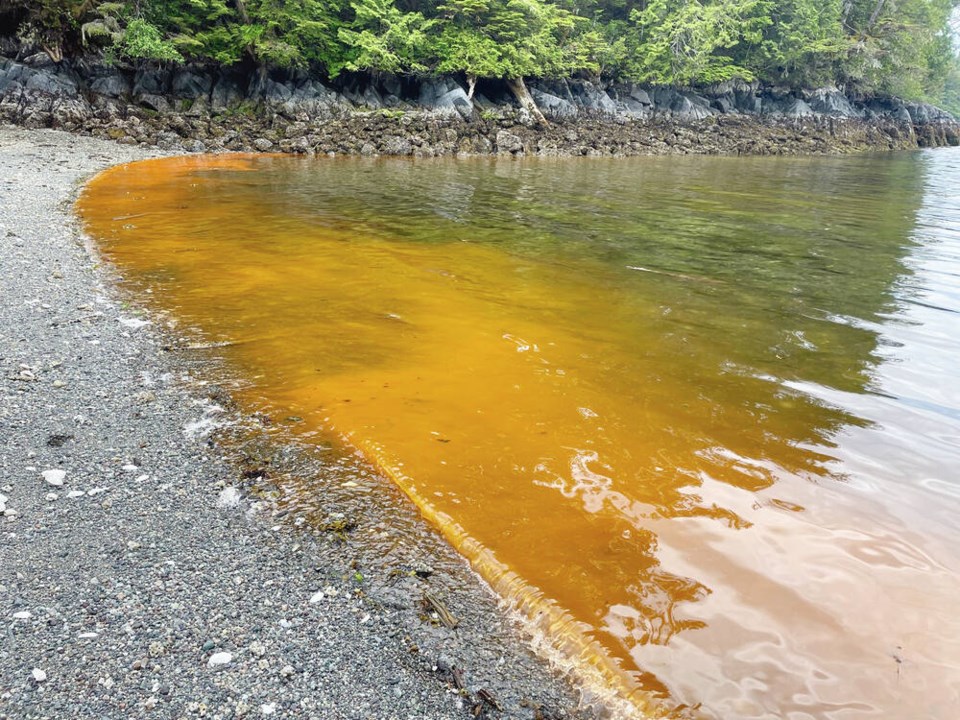Phytoplankton blooms the colour of cream of tomato soup along the shores of Vancouver Island are becoming more common, likely due to hotter weather, scientists say.
Thick orange water was recently spotted in Chemainus, causing some to wonder what caused the bloom.
It’s the result of a phytoplankton called noctiluca, which occurs with the right combination of nutrients in the water and hot weather, said Svetlana Esenkulova, a biologist with the Pacific Salmon Foundation who is trying to determine if the phytoplankton is harming salmon.
Blooms regularly appear briefly in the Strait of Georgia. They have been reported in May, June and July this year and are lasting longer than usual, she said.
“It’s a very unusual year in terms of oceanographic conditions in the Strait of Georgia.”
Blooms have been reported this summer as far north as Haida Gwaii and as far south as the Oregon coast, she said.
While some might mistake the bloom for red tide, a toxic algae bloom that has harmful effects on people, fish, shellfish, marine mammals and birds, noctiluca is not toxic to people or animals.
The organisms contain ammonium and it’s possible they can affect marine life when they decompose, Esenkulova said.
“The decomposition of those blooms, they consume oxygen. So the dissolved oxygen in water drops dramatically. And it can cause hypoxic, which is low oxygen conditions in water, which is very harmful for marine life.”
The phytoplankton eat and engulf smaller phytoplankton, said Moira Galbraith, a zooplankton taxonomist at the Institute of Ocean Sciences.
“From that, you get this breakdown product of ammonium. So, when the bloom is really big, there’s a lot in the water, most fish swim away,” she said.
Galbraith said the frequency of the blooms seems to have increased since B.C. experienced a heat dome in 2021. “It was everywhere then,” she said.
The phytoplankton are always in the water column but “when everything just gets just right,” with warmer temperatures and enough nutrients in the water, they “multiply like mad,” Galbraith said. “They just clone themselves one after the other.”
The fact that the orange blooms are becoming more common is a sign that temperatures are rising, she said.
While it’s not harmful to people, it might not make for the most pleasant swimming. But it’s worth checking out at night when the phytoplankton is bioluminescent, Galbraith said.
>>> To comment on this article, write a letter to the editor: [email protected]



